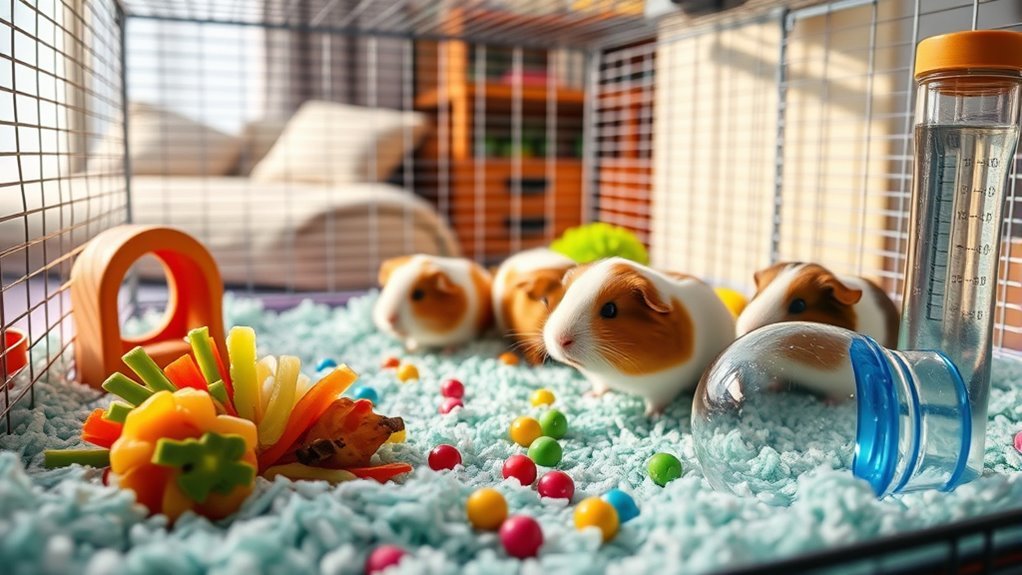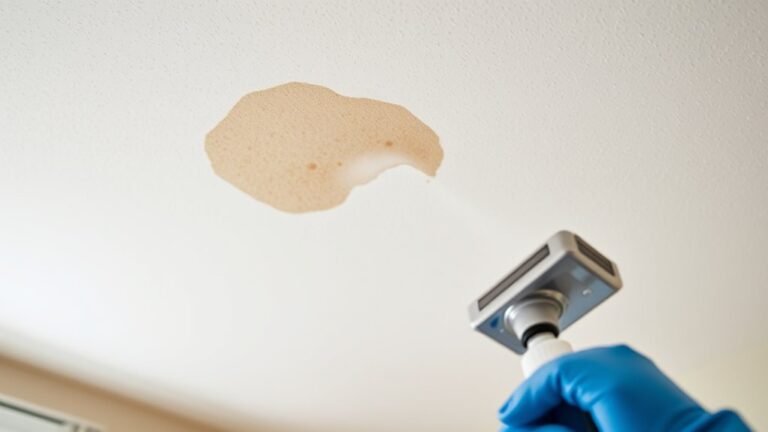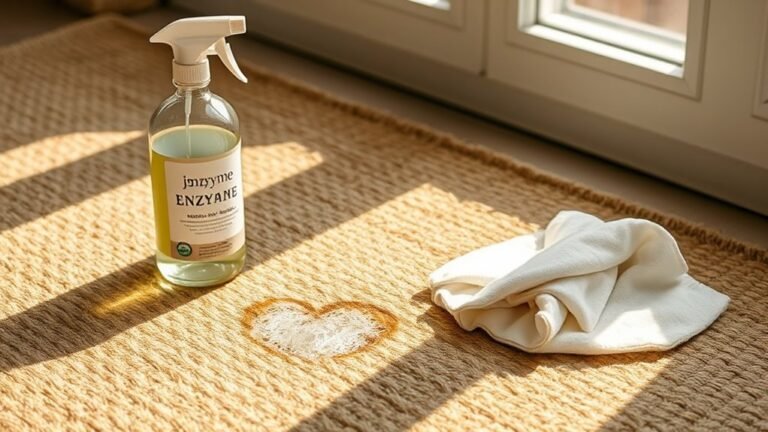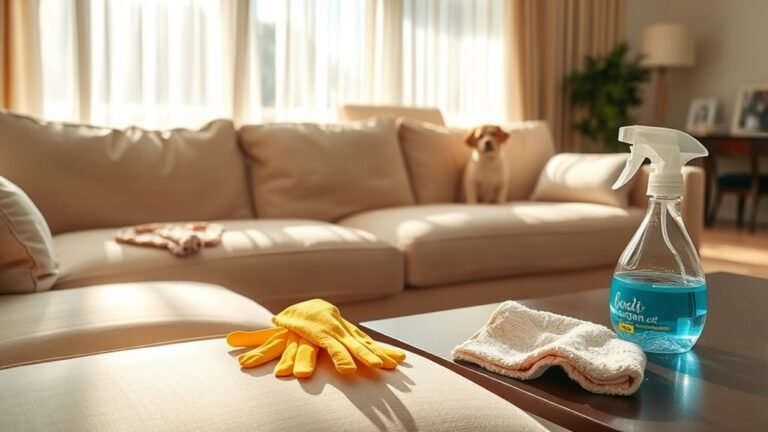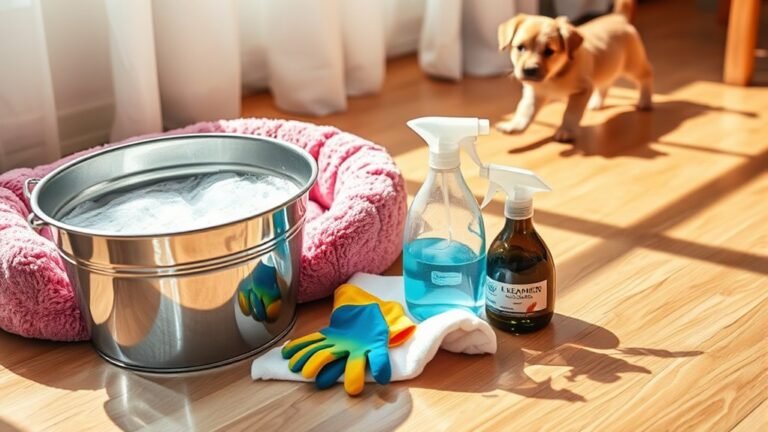How Often Should I Clean My Guinea Pigs Cage
You should clean your guinea pig’s cage regularly to maintain a hygienic environment. Daily spot cleaning is important for removing waste and uneaten food. Aim for a detailed cleaning once a week to guarantee deep sanitation, and don’t forget a monthly deep clean for extensive maintenance. Using pet-safe cleaners is vital, and wearing gloves can enhance hygiene. For tips on keeping the cage clean longer, you’ll find more helpful information in the following sections.
##
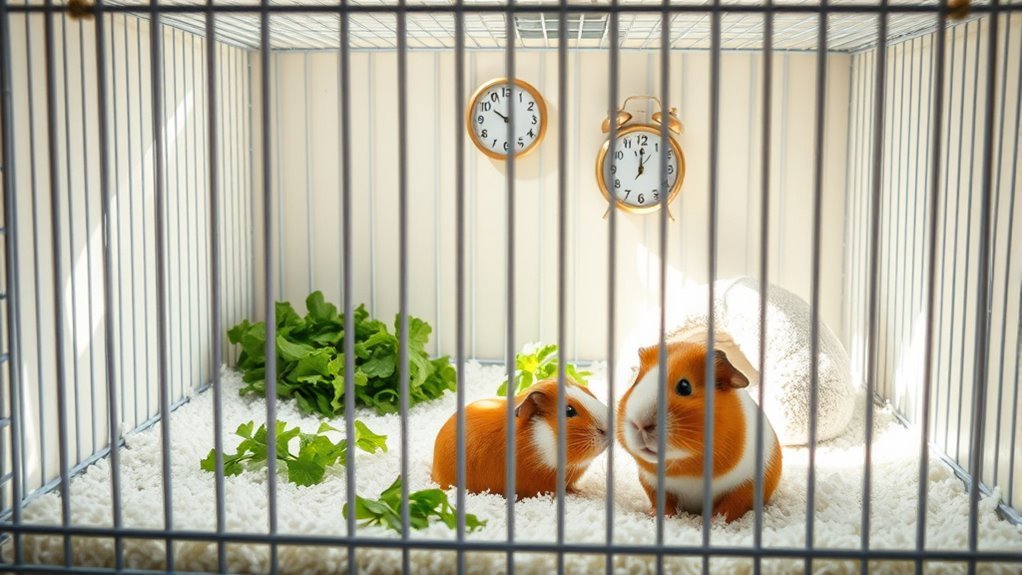
If you’re a guinea pig owner, ensuring a clean and healthy environment for your furry friend is essential, and this article will provide you with all the information you need about cage cleaning frequency. Maintaining a clean habitat not only prevents unpleasant odors but also protects your pet from potential health issues. You’ll learn the ideal schedule for cleaning your guinea pig’s cage, including daily spot cleaning, weekly thorough cleanings, and the importance of monthly deep cleans. By following these guidelines, you’ll create a safe and comfortable space that allows your guinea pig to thrive, ensuring their well-being and happiness.
Preparation For Cleaning
Before diving into the cleaning process, it’s crucial to gather the necessary supplies. Start by reviewing your cleaning schedule to determine how often you’ll clean your guinea pig’s cage. This helps maintain a hygienic environment. Next, consider the cage materials; different materials may require specific cleaning methods. For instance, plastic and wood need different approaches to guarantee longevity and cleanliness. You’ll need items like a scoop, bedding, and appropriate cleaning solutions, but for now, focus on assembling the essentials. Having everything ready before you begin not only streamlines the process but also makes it more efficient. This preparation guarantees your guinea pig’s living space remains clean and comfortable, contributing to their overall well-being.
Tools and Chemical Required

Having the right tools and chemicals is essential for effective cage cleaning. For ideal cage maintenance, you’ll need a selection of cleaning supplies that are safe for your guinea pigs. Here’s a handy table to help you gather what you need:
| Tool/Chemical | Purpose |
|---|---|
| Non-toxic cleaner | Disinfects surfaces |
| Scrub brush | Removes stubborn stains |
| Dish soap | Safe for general cleaning |
| Paper towels | Absorbs moisture and waste |
| Gloves | Protects your hands |
How to Clean:
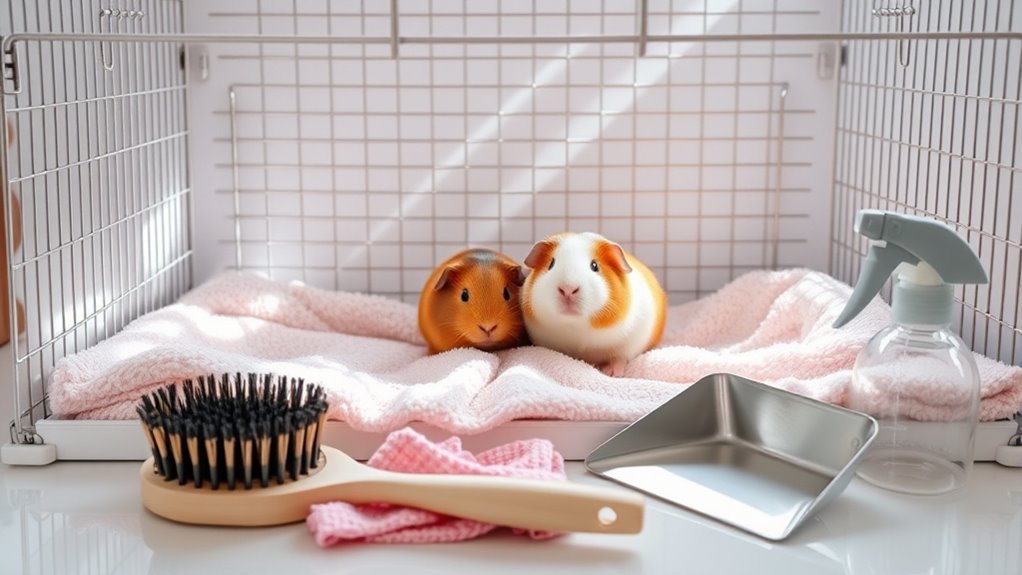
Step 1: Gather Your Cleaning Supplies
- Collect all necessary cleaning materials before you start. This includes:
- A safe, non-toxic cleaner (such as vinegar or a pet-safe commercial cleaner)
- Scrub brushes or sponges
- Fresh bedding material (such as paper bedding or hay)
- Clean food and water dishes
- A temporary enclosure for your guinea pig (a small cage or playpen)
Step 2: Remove Your Guinea Pig
- Gently pick up your guinea pig and place it in a safe, temporary enclosure.
- Ensure the temporary space is secure and comfortable to keep your pet safe during the cleaning process.
Step 3: Empty the Cage
- Carefully remove all bedding from the cage.
- Empty out any food and water dishes, ensuring they are clean and free of debris.
- Dispose of old bedding and any uneaten food properly.
Step 4: Scrub the Cage
- Use your chosen cleaner and a scrub brush or sponge to clean the entire cage.
- Pay special attention to corners and hidden areas where waste can accumulate, as these spots often harbor bacteria and odors.
- Make sure to scrub any surfaces that your guinea pig comes into contact with.
Step 5: Rinse Thoroughly
- After scrubbing, rinse the cage thoroughly with clean water to remove any cleaner residue.
- It’s important to ensure there are no harmful chemicals left that could affect your guinea pig.
Step 6: Dry the Cage
- Allow the cage to air dry completely before adding new bedding.
- You can also use a clean towel to speed up the drying process if needed.
Step 7: Replace Bedding, Food, and Water
- Once the cage is dry, add fresh bedding material evenly across the bottom.
- Refill food and water dishes with clean, fresh supplies.
- Ensure that the food is appropriate for guinea pigs and free from any spoilage.
Step 8: Maintain a Cleaning Schedule
- Set a consistent cleaning frequency to ensure your guinea pig’s environment remains hygienic.
- Aim for a thorough clean once a week, with spot cleaning every few days to remove waste and uneaten food.
- Regular maintenance not only promotes your guinea pig’s health but also creates a comfortable living environment for them to thrive.
Safety Consideration
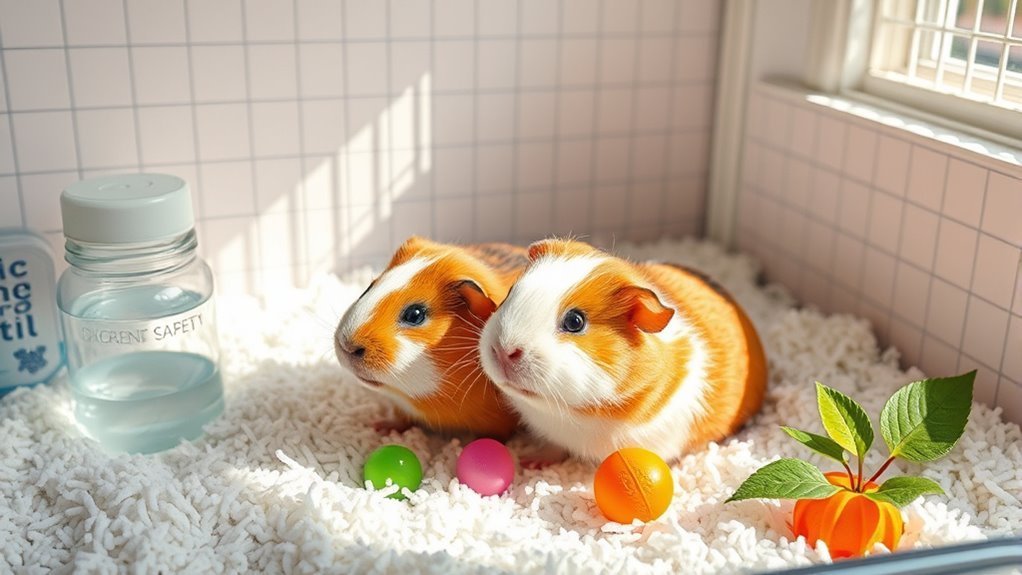
While cleaning your guinea pig’s cage is vital for their health, safety considerations must also be a priority. Be aware of the health risks associated with improper cleaning methods. Use pet-safe cleaning solutions to avoid harmful residues that could affect your guinea pig’s well-being. Regularly check for sharp edges or broken items in the cage that could pose a danger. When removing bedding and waste, always wear gloves to maintain hygiene and protect yourself from bacteria. It’s important to understand the hygiene significance in preventing respiratory issues and infections in your guinea pig. By prioritizing safety during cleaning, you guarantee a healthier living environment that supports your pet’s overall happiness and freedom. Additionally, establishing a consistent cleaning routine can help maintain this safe environment and reduce the risk of pet-related health issues.
Tips to keep clean for long time
Maintaining a clean guinea pig cage isn’t just about regular cleaning; it’s also about implementing strategies that prolong cleanliness. Start with proper cage maintenance by using absorbent bedding material, like aspen shavings or paper-based products, which help control moisture and odors. Regularly spot clean soiled areas daily, removing droppings and wet bedding to minimize buildup. Invest in a high-quality air purifier to further enhance odor control within the environment. Place the cage in a well-ventilated area to prevent stale air and dampness. Consider rotating toys and hiding spots to encourage your guinea pigs to stay active, which can reduce localized messes. Following these tips will help maintain a fresher, cleaner habitat for your furry companions. Additionally, keeping your living and workspaces well-ventilated promotes air circulation that reduces airborne germs and odors around the cage area.
Frequently Asked Questions
How Can I Tell if My Guinea Pig’s Cage Is Dirty?
If your guinea pig’s cage is dirty, you’ll notice a few tell-tale signs. Did you know that guinea pigs can produce up to 100 droppings a day? Keep an eye on their behavior; if they seem lethargic or avoid their space, it might indicate poor cage hygiene. Additionally, watch for strong odors or visible waste buildup. Regularly inspecting bedding and food areas will help maintain a clean environment for your furry friend.
What Bedding Material Is Best for Guinea Pig Cages?
The best bedding material for guinea pig cages includes hay options and fleece. Hay provides a natural, soft surface that encourages burrowing and nesting, while also being edible. However, fleece benefits include easy cleaning, reduced mess, and comfort for your guinea pig. When using fleece, make certain to layer it with absorbent material underneath to control moisture and odor. Ultimately, choosing between hay and fleece depends on your preferences and your guinea pig’s needs.
Can I Use Vinegar as a Cleaning Solution?
Yes, you can use vinegar as a cleaning solution for your guinea pig’s cage. Vinegar’s benefits include its natural antibacterial properties and ability to neutralize odors. To effectively clean, mix equal parts vinegar and water, then apply it to surfaces. Let it sit for a few minutes before wiping down. This method is safe and environmentally friendly. Just remember to rinse thoroughly afterward to guarantee no vinegar residue remains, keeping your pets happy and healthy.
How Do I Prevent Odors in the Cage?
To prevent odors in your guinea pig’s cage, guarantee proper cage ventilation by placing it in a well-ventilated area. Regularly replace bedding and remove waste to enhance odor control. Consider using absorbent materials that can trap smells effectively. Additionally, maintain a consistent cleaning schedule, as stagnant waste can lead to unpleasant odors. Using safe, non-toxic cleaning solutions can also help keep the cage fresh and your pets healthy.
Should I Remove My Guinea Pigs During Cleaning?
Yes, you should remove your guinea pigs during cage cleaning to guarantee their safety. This prevents them from accidentally ingesting cleaning products or getting injured while you’re tidying up. Place them in a safe, comfortable area away from the mess. After you’ve thoroughly cleaned the cage and allowed it to dry, you can return your pets to their freshly sanitized space. This routine helps maintain a healthy environment for your furry friends.
